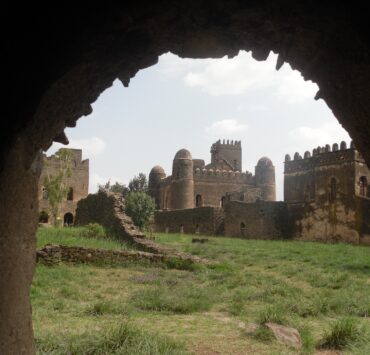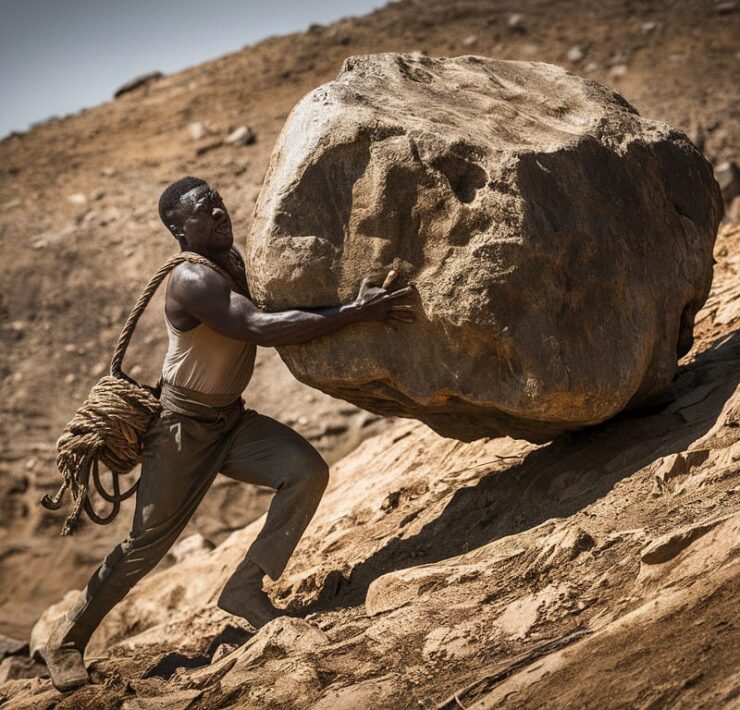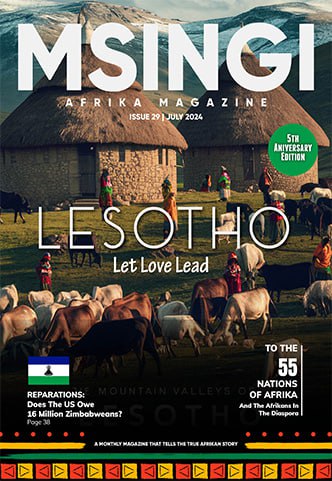Greek and Afrikan Elements in Sculpture

Mr. Wanyama Ogutu is a scholar in the Master of…
“A voice of one is calling in the desert.” “Prepare the way for the Lord, and make straight paths for him.” This is the prophetic voice of the prophet Isaiah emanating from the marble baptismal font at All Saints Cathedral, Nairobi. It is mounted on the corner of the north aisle inside the cathedral. Nevertheless, the prophetic voice is not heard loudly on the wall of a gigantic cathedral due to its unseen location. At the main door of my local church in western Kenya, there is an elaborate clay baptismal font on a wooden stand. It is important to note that the main church door, popularly known as the “West door” at the cathedral, is where the priest loudly pronounces “Peace Be With You.” Then processional contingents of the choir start to make an entrance into the church with a hymn. On an annual visit to a rural parish, l always witnesses a diocesan bishop baptizing 70 babies and 30 adults at the clay baptismal font. Kneeling on the woven papyrus mat, I could see heaven opening up and the holy spirit descending like a dove, singing “Hallelujah!” “Hasannah!” as dedicated water splashed on the heads of babies and adults. During the benediction, I observed a purple zucchetto-covering bald bishop uttering in Luhyia-Lusamia: “Embaachi yimalire ohutekehwa ohutemera emisaala hu misi bwene, buli musaala kwoosi okutachia ohwaama ebyaamo bilai kuchia ohutemwa kusukunwe mu muliro” (The axe is already at the root of the trees, and every tree that does not bear good fruits will be cut and thrown into the fire)”
The baptismal font at All Saints Cathedral, Nairobi, is a religious artifact made of marble. The sole purpose is to baptize the people at the cathedral. It is also a symbol of the prophetic voice of the prophet Isaiah, a reminder that Christians should repent for the forgiveness of their sin. It is a fine art item of ceramics and sculpture subject to research in theology, history, and archeology, among others. The baptismal font derives its historical roots from geometrical Greek ceramic art, Neo-classicism, the Medieval Age, and East African pottery. It has later been adapted into contemporary modern items for secular purposes in a variety of contentious religious doctrines. The baptismal font features geometrical forms, shapes, and designs inspired by ancient Greece, Neo-classicism, and medieval Europe. This is evident in the top part of the semi-sphere, regular cuboids, and elements of line, shape, and texture. The substitution technique of sculpture has created a semi-sphere basin that holds dedicated water for religious core. The cuboid pillar is meant to raise and hold the basin for baptism. The early women in East Africa used pots to fetch water from rivers, and bathe at home for those who were afraid of alligators and snakes. The art of African pottery was inherently consumed by Prof. Magdalene Odundo when she was a young girl in Kenya. Later, during her scholarly research in art and design, she created the greatest ceramic masterpieces of all time, which were exhibited in prestigious museums around the world in the post-modern era.

The sculpture of the marble baptismal font is a sculpture in the round. It is 2 meters tall and 0.05 meters wide, and it has an explicit smooth textural effect. The sculpture is carved out in both vertically asymmetrical and horizontally symmetrical balance. Horizontal symmetrical balance is divided into two parts: the top, a ceramic vessel, and the bottom, a gothic architectural pillar that holds the ceramic basin. A tray or basin is held by a three-legged pillar signifying the church foundation “God the Father, The Son, and The Holy Spirit.” On contrary, another central pillar was added to provide additional stability to the sculpture in the round. A medieval architectural design of the cathedral age is displayed in a rectangular and circular shape at the bottom of the pillar. The tray is distinguished by being hollow and void. The hollow is deep enough to hold a symbolic amount of the Jordan River’s water. The void gives an impressive design of contour lines around the medieval pillar, reflecting a valley in Jordan in the desert of Judea. The beautiful texture of natural-coloured irregularly decorated shapes sparkle on the surface of the baptismal font, resembling the wavy waters of the Jordan when Jesus stepped in and requested John the Baptist to baptize him. The smooth spots on surface of the baptismal font can be felt through sensory and tactile textures, which tell the biblical baptism story according to Saint Matthew.
In conclusion, the marble baptismal font is a sculpture of marble stone of Greek origin. It was carved out in England by European artists and then carefully airlifted to All Saints’ Cathedral, Nairobi, due to its fragility. It was a donation in 1919 by the Spencer-Cooper family, and it says in the inscription, “A SACRED TO THE MEMORY OF ROBERT HARRIS TEMPLE HANCOCK OF KARURA FOREST NAIROBI AND JOHN RICHARD HANCOCK, 1917.” (The inscription is not clearly visible because of the numerous cracks on the letters.) The marble baptismal font is a unique ceramic item and an indelible work of sculpture. Its intrinsically African designs and techniques draw influence from ancient Greek sculpture, medieval art, and East African pottery. It is a profound religious item subject to scholarly research across the world. The marble baptismal font intends to baptize people in the cathedral and raise the prophetic voice of the prophet Isaiah, as mentioned by Saint Matthew and Luke. Nonetheless, a visiting Anglican priest from the Cathedral of Canterbury in Kent and a scholar in religious artifacts once drew a dissatisfaction that the prophetic voice of prophet Isaiah is not as loudly conveyed in its current location at a corner of the north aisle.
REFERENCE
Ogutu W. (2020).The Restitution of Indigenous Religious Artifacts: The Case of Study All Saints’ Cathedral, Nairobi- Kenya–International Journal of Innovative Science and Research Technology Vol 5.(6) Vikiru, G., Aguda, B,. Muneza,D,. Abati, I.,. Ogutu, W. (2021). Evolution of trends and processes in At Artistic practice in Africa. Design for All Institute of India Vol(16),5 www.designforall.in
What's Your Reaction?
Mr. Wanyama Ogutu is a scholar in the Master of Arts (Fine Arts) program at Kenyatta University. He is also a practicing visual artist specializing in drawing, painting, and sculpture within, Nairobi, Kenya. He focusing in Painting with its’ philosophy, education and extension to Africa contemporary Art. Most of his artworks focus on interaction, environment, and education. Wanyama has a passion for fine art research; its philosophy, development, and relevance. He writes on profound academic topics, where he has presented and published in international journals and conferences around the world. He is a consultant in innovation and creative strategy on issues affecting our society. He is currently a part-time teacher at some TVET institutes within Nairobi.


















